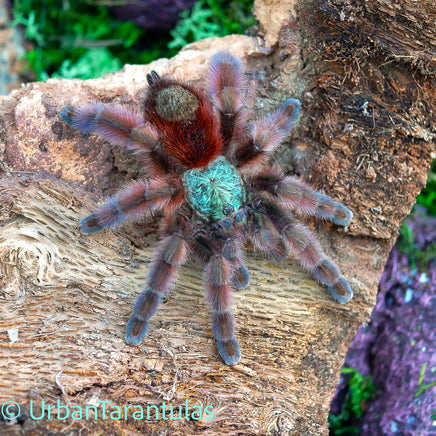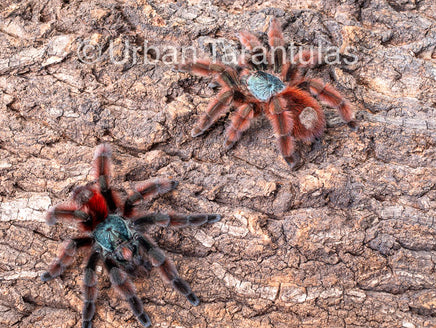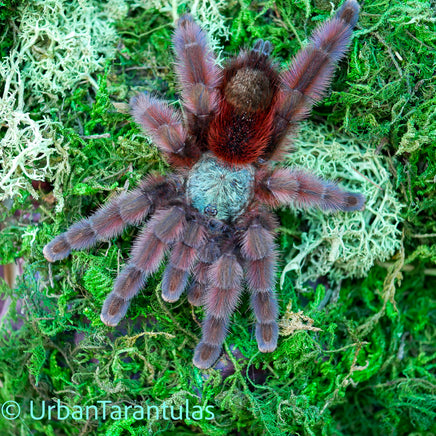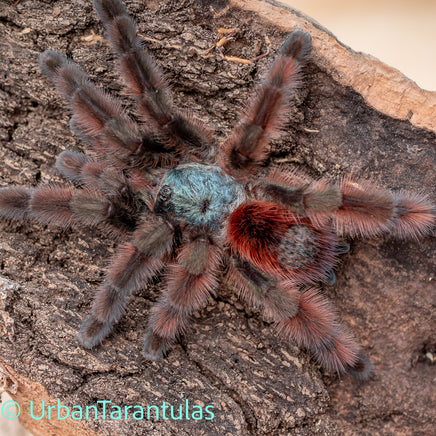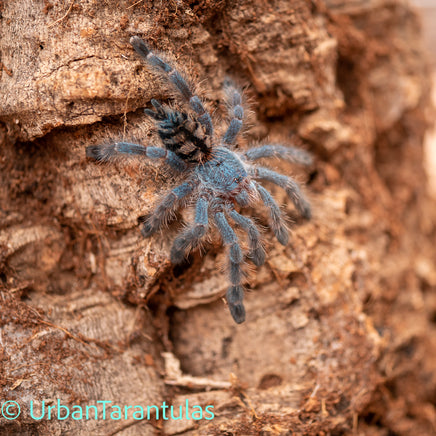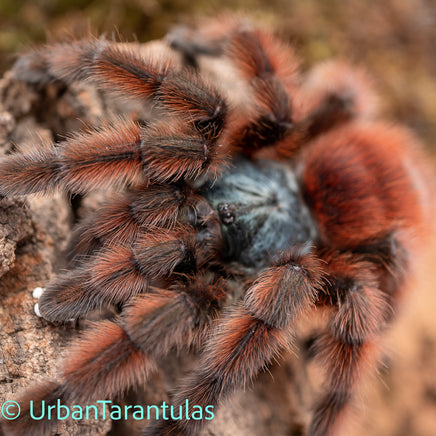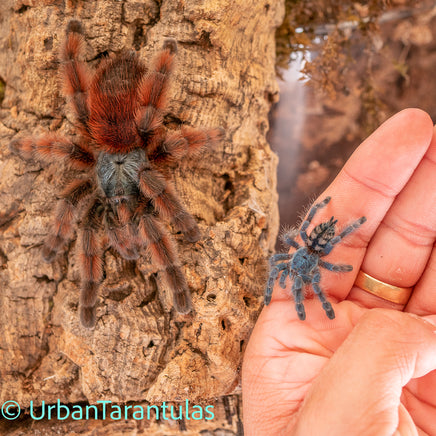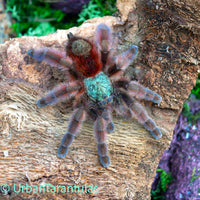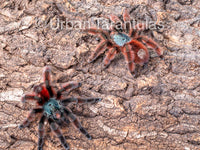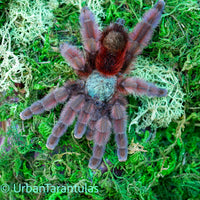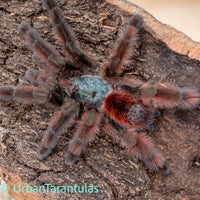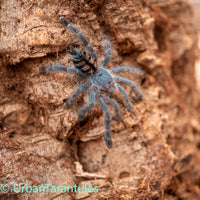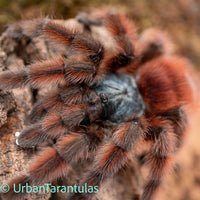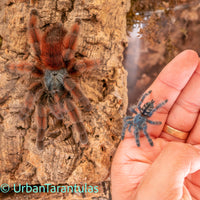Meet the Mesmerizing Caribena Versicolor
In the world of tarantulas, the Caribena versicolor truly stands out, embodying the perfect blend of beauty and mystery. Commonly known as the Antilles Pink Toe Tarantula, this species boasts an array of colors that change dramatically as it matures, making it a fascinating spectacle at every stage of its life. From the vibrant blue of its youth to the rich green and purple hues in adulthood, accompanied by striking pink toes, this arboreal marvel is a living piece of art. Let's dive into the care and marvels of housing such a captivating creature.
Care Details
Temperature: Ideal conditions range between 75 to 85°F (24 to 29°C). The warmth encourages more frequent eating, faster growth, and quicker molting, showcasing the Caribena versicolor’s vibrant color changes even more prominently.
Humidity: This species thrives in humidity levels around 70-80%. It’s crucial to maintain these levels to mimic their natural rainforest environment. Although I don’t use water dishes, having one will not harm your tarantula.
Housing: As an arboreal tarantula, the Caribena versicolor requires specific housing:
- Babies: A small vial, up to 5 inches tall and 2 inches in diameter, with proper ventilation. Remember, I offer free vials at checkout upon request.
- Juveniles and Adults: For individuals larger than 2 inches, a 7-8 inch tall enclosure is suitable, while adults should be housed in a 12 to 16 inches tall enclosure, providing ample space for climbing and webbing.
Diet: I feed them a variety of crickets and cockroaches, including Dubia, Red-runner, Lobster, and Madagascar hissing roaches. Baby tarantulas do well with baby crickets and roaches. If you only have access to one type of prey, that's perfectly fine. For smaller prey, crushing the head and leaving it in the enclosure works well. Always remove uneaten food to avoid mold. Occasionally, a pinky or hopper mouse can serve as a treat, but remember to limit such high-calcium meals.
In-depth Facts
- Latin name: Caribena versicolor
- Common names: Antilles Pink Toe Tarantula, Martinique Red Tree Spider
- Locale: Native to the Caribbean, specifically the islands of Martinique and Guadeloupe.
- Category: Arboreal, with a penchant for creating intricate webs.
- Size: Females can reach up to 5 inches, with males slightly smaller.
- Urticating hairs: They prefer the scare the prey away with their mesmerizing colors.
- Growth rate: Medium, allowing keepers to witness their color transformation over time.
- Life span: Females can live up to 12 years, with males having a shorter life span.
- Recommended levels: Suitable for everyone, including those new to tarantula care.
Stay Connected:
- Instagram: Follow my Instagram, I'm most active here.
- YouTube: For care and education videos, check out my YouTube channel.
- Facebook: Over here I have all my reviews.
- TikTok: Visit my TikTok for additional content.
Safety Disclaimer:
Experiencing a tarantula bite is an extremely rare occurrence, and it's important to note that there have been no recorded fatalities due to a tarantula bite. The venom potency varies across species, with Old World tarantulas generally having stronger venom than their New World counterparts. Within the Old World category, the Poecilotheria genus is known for having particularly potent venom.
It's crucial to approach tarantulas with respect and understanding. If you happen to get bitten, which is unlikely, the key is to stay calm. In most cases, the discomfort is superficial and subsides within a few minutes to a few hours. However, bites from species with more potent venom may result in symptoms lasting up to a week. Remember, larger tarantulas tend to have more venom than smaller ones.
Please be aware that I cannot assume responsibility for bites. Tarantula handling should be done at your own risk. In my 11 years of experience with these creatures, I have only been bitten once, by a species with highly potent venom. While the experience was painful, the symptoms had completely disappeared after a week.
Handle tarantulas responsibly, and always prioritize your safety and the well-being of the tarantula.
